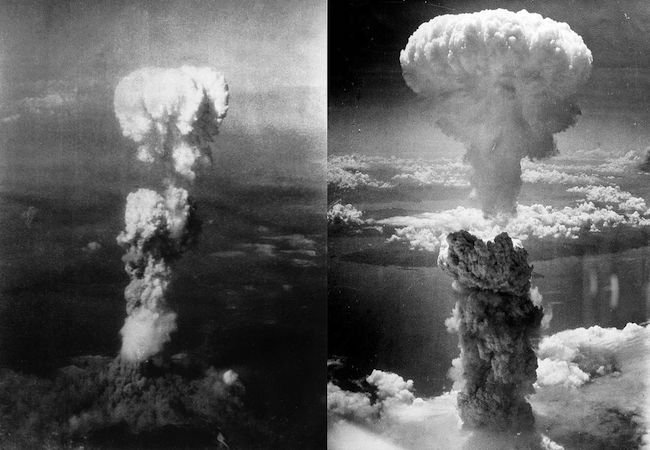Nuclear weapons: The anchor sheet of peace and stability

By Sidra Ajaib Kayani
The horrific detonation of Hiroshima and Nagasaki caused the evolution of a new era of politics in the world. It was the first time in the history of warfare that the scale of human causalities with a single strike of any kind of weapon became unthinkable. As we know that throughout history, the International Political System lacks a central authority which can actually govern and control the behavior of any State. They are like organisms seeking survival in this anarchic system by any and all means available at its disposal. Every State has a right to protect its vital interests.
Nuclear weapons have considered the anchor sheet of peace and stability in the world. Nuclear deterrence became a central theme throughout the Cold War. The possession of nuclear weapons acted like a firewall between the two superpowers, despite their continued efforts to develop maximum number of weapons. Similarly, during the late 1950s and 1960s three other nations, France, Britain and China also managed to develop their own nuclear weapons, adding more anarchy in the international system. But while nuclear deterrence didn’t allow any nuclear state to attack another nuclear state directly, it certainly could not prevent them from indirect confrontations in non-nuclear states caught in this turmoil.
The presence of deterrence in the South Asia, where two arch rivals are neighbors, is a unique and completely different relationship than the US-former Soviet Union tussle. After the 1974 Indian PNE, Pakistan’s nuclear program is directly related to Indian nuclear ambitions. Since then, the world has not seen any all-out war between two bitter rivals because deterrence relationship prevails among them. Such restraint was seen during the two decades of nuclear ambiguity since 1974 and overt nuclearization by India and Pakistan in May 1998. India’s quest for prestige in the world with nuclear weapons and major power ambitions has been viewed as threatening behavior by Pakistan. The 1971 war left a bitter legacy in Pakistan, forcing it to make a twofold CMD’ stance against Indian attempts to be dominant power in South Asia. The Indian military development in the regions has created a security dilemma for Pakistan. Pakistan started its nuclear weapons program in 1970s with a rational of securing its state against future Indian aggression as seen in 1971.
Despite having negative implications on the bilateral relationship between India and Pakistan as well as in the region, the positive effects of South Asian nuclearization have been the prevention of any Pakistan-India wars since 1998. Despite having positive effects, the relationship between India and Pakistan remains tense and full of mistrust. Both countries continuously allege each other by promoting terrorists against one another, especially India blames militant Islamist activity in the region as solely the fault of Pakistan. Many defence analysts believe that there is a ‘Stability-Instability Paradox’ that defines the Pak-India nuclear relationship. This continued mistrust has often resulted in tensions on the borders. However, due to possession of nuclear weapons by both the countries any conflict didn’t convert into all-out war in the subcontinent since 1971.
Pakistan’s quest for nuclear weapons in response has not been taken kindly by India and much of the world. Pakistani nuclear weapons have hindered Indian hegemony in the region, with India accusing Pakistan of using nuclear deterrence as an excuse to continue sub-conventional low intensity conflict against it.
Pakistan has faced continued negativity in the international media and academia. Concerns are also being raised regarding Pakistan’s nuclear safety and security. The international nuclear establishment coupled with pessimistic nuclear academicians and scholars in International media is consistently having a view that Pakistan making its nuclear weapons at a very fast pace.
To conclude, despite all the myths propagated against Pakistan’s nuclear weapons, the above mention debate clearly illustrates that because of the existence of nuclear weapons in the peculiar environment of South Asia the region remained safe from any major conflict. This effectiveness of nuclear weapons would also hinder the way of nuclear disarmament in South Asia.




